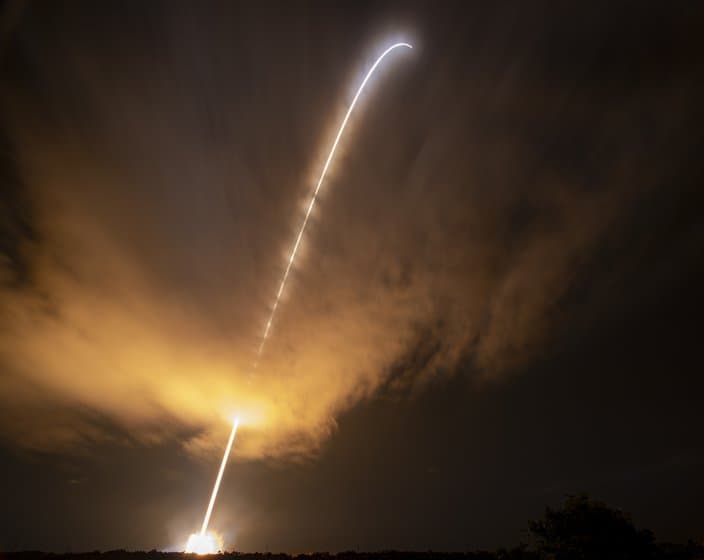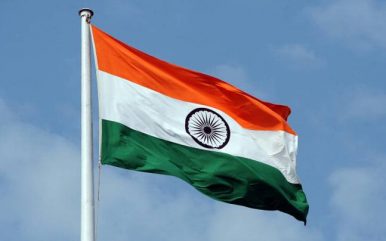 As India celebrates its 72nd Independence Day this Wednesday, there is a new spring in its steps as it straddles the global firmament. India is no longer the coy diffident power of the past, when it was constantly treading on eggshells for fear of offending this or that power. Today’s India is a self-confident nation able to manage its external relations on its own terms without any ideological baggage. It can engage the United States as a strategic partner even as it can chart its own course vis-à-vis Russia and China. It can stand with China to raise its voice against global protectionism and yet it can stand up to China when its vital interests are targeted, like in Doklam last year. It can proclaim a historic relationship with Russia, but can manage to be candid about Russia’s obsession in viewing its every partnership through the prism of its struggle with the West. If there is one power that sits relatively confident in today’s rapidly evolving global dynamic when all other powers are openly competing with each other, it is India. Let there be no doubt about it.
As India celebrates its 72nd Independence Day this Wednesday, there is a new spring in its steps as it straddles the global firmament. India is no longer the coy diffident power of the past, when it was constantly treading on eggshells for fear of offending this or that power. Today’s India is a self-confident nation able to manage its external relations on its own terms without any ideological baggage. It can engage the United States as a strategic partner even as it can chart its own course vis-à-vis Russia and China. It can stand with China to raise its voice against global protectionism and yet it can stand up to China when its vital interests are targeted, like in Doklam last year. It can proclaim a historic relationship with Russia, but can manage to be candid about Russia’s obsession in viewing its every partnership through the prism of its struggle with the West. If there is one power that sits relatively confident in today’s rapidly evolving global dynamic when all other powers are openly competing with each other, it is India. Let there be no doubt about it.Pages
▼
20 August 2018
Making Sense of India’s Foreign Policy After 72 Years of Independence
 As India celebrates its 72nd Independence Day this Wednesday, there is a new spring in its steps as it straddles the global firmament. India is no longer the coy diffident power of the past, when it was constantly treading on eggshells for fear of offending this or that power. Today’s India is a self-confident nation able to manage its external relations on its own terms without any ideological baggage. It can engage the United States as a strategic partner even as it can chart its own course vis-à-vis Russia and China. It can stand with China to raise its voice against global protectionism and yet it can stand up to China when its vital interests are targeted, like in Doklam last year. It can proclaim a historic relationship with Russia, but can manage to be candid about Russia’s obsession in viewing its every partnership through the prism of its struggle with the West. If there is one power that sits relatively confident in today’s rapidly evolving global dynamic when all other powers are openly competing with each other, it is India. Let there be no doubt about it.
As India celebrates its 72nd Independence Day this Wednesday, there is a new spring in its steps as it straddles the global firmament. India is no longer the coy diffident power of the past, when it was constantly treading on eggshells for fear of offending this or that power. Today’s India is a self-confident nation able to manage its external relations on its own terms without any ideological baggage. It can engage the United States as a strategic partner even as it can chart its own course vis-à-vis Russia and China. It can stand with China to raise its voice against global protectionism and yet it can stand up to China when its vital interests are targeted, like in Doklam last year. It can proclaim a historic relationship with Russia, but can manage to be candid about Russia’s obsession in viewing its every partnership through the prism of its struggle with the West. If there is one power that sits relatively confident in today’s rapidly evolving global dynamic when all other powers are openly competing with each other, it is India. Let there be no doubt about it.India's China Policy- Reset: Strategiclly inadvisable without clear bench marks:
By Dr Subhash Kapila
Misgivings on India’s surprise China Policy Reset in March 2018 marking a U-turn from India’s standing tall against China’s military provocations and intrusions in Dokalam analysed in the above referred Paper have largely materialised as evidenced by China’s unceasing buildup at Dkalam and repeat of Dkalam Standoff confrontation in Ladakh in end-July 2018. Keeping Dokalam aside, China’s overall policies in the post- Wuhan Summit period have shown no positive U-turn from its decades-old ‘India Containment ‘policies, nibbling at India’s traditional areas of influence and now further reinforcing its buildup of Pakistan as the ‘Regional Spoiler State’ by solidifying the China-Pakistan Axis posing a Two War Threat Scenario. In short, China persists in its adversarial and confrontationist postures against India, notwithstanding its flowery rhetoric.
What Pakistan's New Prime Minister Faces in Power
 Prime Minister Imran Khan's incoming administration will maintain a hands-off approach on Pakistan's military-dominated foreign policy, meaning Islamabad's strategy of asymmetric warfare in Kashmir and Afghanistan will endure in spite of U.S. pressure. Since Islamabad requires a strong relationship with China for diplomatic and financial support, it will not alter its involvement in the China-Pakistan Economic Corridor in spite of domestic opposition. Because Khan will seek a bailout from China to shore up Pakistan's diminishing foreign exchange reserves amid the country's expanding debt burden, he is unlikely to realize his vision of creating a social welfare state to lift up the poor.
Prime Minister Imran Khan's incoming administration will maintain a hands-off approach on Pakistan's military-dominated foreign policy, meaning Islamabad's strategy of asymmetric warfare in Kashmir and Afghanistan will endure in spite of U.S. pressure. Since Islamabad requires a strong relationship with China for diplomatic and financial support, it will not alter its involvement in the China-Pakistan Economic Corridor in spite of domestic opposition. Because Khan will seek a bailout from China to shore up Pakistan's diminishing foreign exchange reserves amid the country's expanding debt burden, he is unlikely to realize his vision of creating a social welfare state to lift up the poor.An alignment for peace in Afghanistan
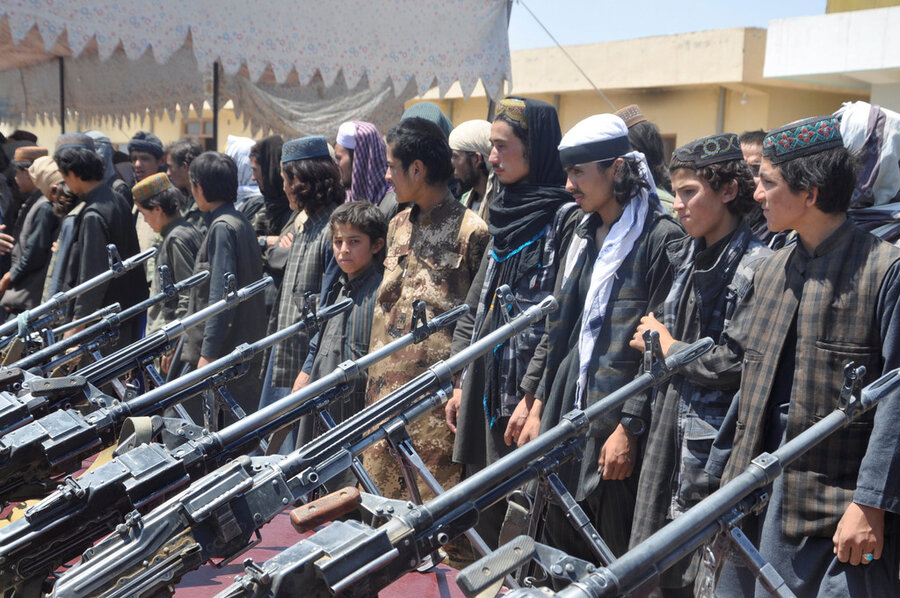 Over the past year, the long war in Afghanistan has seen no strategic breakthroughs. And in fact, a major battle is now being waged in the city of Ghazni. Yet, according to some diplomats, recent moves by the United States, the Taliban, and the elected government in Kabul may offer the best hope yet for a settlement. Such optimism rests on the US maintaining its current approach. This includes strengthening the Afghan government and its security forces while eliminating any terrorism threat, especially from the Afghan branch of Islamic State (ISIS). It also means strengthening international support for a peace deal, notably by pressing Pakistan to play a constructive role.
Over the past year, the long war in Afghanistan has seen no strategic breakthroughs. And in fact, a major battle is now being waged in the city of Ghazni. Yet, according to some diplomats, recent moves by the United States, the Taliban, and the elected government in Kabul may offer the best hope yet for a settlement. Such optimism rests on the US maintaining its current approach. This includes strengthening the Afghan government and its security forces while eliminating any terrorism threat, especially from the Afghan branch of Islamic State (ISIS). It also means strengthening international support for a peace deal, notably by pressing Pakistan to play a constructive role.Time for the US to Stop Supporting Pakistan’s Military Rule
By Mark Hannah
The election of former cricket star Imran Khan as Pakistan’s next prime minister comes at a pivotal moment. Khan must decide whether he will try to break the Pakistani military’s stranglehold over policymaking and institute much needed reforms, or preserve the status quo and become the generals’ charismatic puppet. Unfortunately, the current U.S. policy of supporting the country’s military at the expense of its civilian government risks nudging him in the wrong direction. Pakistani democracy is often seen as a “charade.” The military enjoys a virtual monopoly over foreign and economic policy, and the country’s parliament is dismissed as a mere patronage scheme, which preserves family fortunes and perpetuates tribal dominance. But Western critics often fail to appreciate how their own governments have undermined the country’s democratic institutions and empowered its unelected military rulers.
Whatever happened to Osama bin Laden’s original Al Qaeda in Afghanistan?
Wesley Morgan
The troops waging America’s 17-year-old war in Afghanistan are confronting a puzzle: What has become of the enemy who drew them there? Al Qaeda, the group whose Sept. 11 terrorist attacks provoked the U.S. invasion in 2001, has shrunk to relative obscurity among the military’s other missions in Afghanistan, supplanted by newer threats such as a local branch of the Islamic State. And it is a matter of debate how much Al Qaeda’s remaining Afghan presence still focuses on launching attacks overseas, according to current and former military officers and government officials, experts, and Afghans from areas where the group operates.
The Haunting Memories of the PAK-1 Crash
By Fred Burton
 On Aug. 17, 1988, the Pakistani presidential aircraft, code-named PAK-1, plummeted out of the sky into a dusty field outside Bahawalpur in southeastern Pakistan. Within a matter of hours, I found myself overlooking the still-smoking crater that the C-130 Hercules aircraft had dug into the earth in a region near the Pakistani border with India. The investigation that followed, long before the days of instant internet and cellphone communications, may have been the most complex I'd ever worked in my career as a special agent for the U.S. State Department.
On Aug. 17, 1988, the Pakistani presidential aircraft, code-named PAK-1, plummeted out of the sky into a dusty field outside Bahawalpur in southeastern Pakistan. Within a matter of hours, I found myself overlooking the still-smoking crater that the C-130 Hercules aircraft had dug into the earth in a region near the Pakistani border with India. The investigation that followed, long before the days of instant internet and cellphone communications, may have been the most complex I'd ever worked in my career as a special agent for the U.S. State Department.Losing by "Winning": America's Wars in Afghanistan, Iraq, and Syria
By Anthony H. Cordesman
The U.S. has now reached the point where the third Administration in a row is fighting wars where the U.S. often scores serious tactical victories and makes claims that it is moving toward some broader form of victory but cannot announce any clear strategy for actually ending any given war or bringing a stable peace. Once again, a new Administration seems to have focused on the tactical level of conflict and called this a strategy but has failed to have any clear strategy for ending the fighting on favorable terms. More than that, the new Administration seems to have accepted the legacy of the previous Administration by largely abandoning the civil side of each war. It is dealing with major insurgencies and civil war as if they were limited terrorist movements. It has no clear civil-military strategy, plans for stability operations, or options to create the level of governance and development that could bring a lasting peace. It has no grand strategy and is fighting half a war.
Assam’s ‘Miya’: Proving You Are Indian
By Priyanka Borpujari
“Finally, we are Indians.”
 Rubul’s relief and elation, his identity no more in question, travels over the long distance phone call from Guwahati as he speaks with me. The 24-year-old social worker – whose official name is Iftikar Hussein Siddiqui – recently found his name on the second draft of the National Register of Citizens (NRC), which was released on July 30. His name, including those of his entire extended family, was missing from the first draft that was released on January 1, 2018. With his family now mentioned on the second list, Rubul – a Bengali-speaking Muslim man living in the northeastern Indian state of Assam – feels that he will no longer need to prove his patriotism in India.
Rubul’s relief and elation, his identity no more in question, travels over the long distance phone call from Guwahati as he speaks with me. The 24-year-old social worker – whose official name is Iftikar Hussein Siddiqui – recently found his name on the second draft of the National Register of Citizens (NRC), which was released on July 30. His name, including those of his entire extended family, was missing from the first draft that was released on January 1, 2018. With his family now mentioned on the second list, Rubul – a Bengali-speaking Muslim man living in the northeastern Indian state of Assam – feels that he will no longer need to prove his patriotism in India.Sirisena does a Rajapaksa, changes stand on Chinese investments
By GUNJAN SINGH
Over the last few years, Sri Lanka has become a case study of how Chinese money and clout have the capability to buy favors and concessions. The government under Mahinda Rajapaksa gave China a free hand in how it chose to invest in Sri Lanka. Beijing put a lot of money into economically non-viable though strategically important projects, especially the Hambantota Port and Airport. With time, the projects failed to achieve any benefit for the Sri Lankan economy. Rajapaksa lost the presidential elections in 2015 to Maithripala Sirisena. The issue of mounting Chinese debt played a major role in the latter’s victory. However, the Hambantota loan forced the Sri Lankan government to lease the port for 99 years to a Chinese shipping company with the hope of repaying the debt in due course.
The Man in Xinjiang
Ottessa Moshfegh
 The guidebook said that if we got off the bus at a certain point on the Karakoram Highway, a shepherd would greet us and let us stay in a yurt for a modest fee. The highway was a dirt road in Xinjiang, in northwestern China. I was travelling with a man I’ll call Tim, and we had been on buses for more than twelve hours. When we reached a pasture between snow-capped mountains and saw Karakul Lake glittering in the distance, we got off. The bus pulled away, and it was suddenly very quiet, the late-afternoon sky irrevocably clear, as if nothing bad could happen—not here, not anywhere.
The guidebook said that if we got off the bus at a certain point on the Karakoram Highway, a shepherd would greet us and let us stay in a yurt for a modest fee. The highway was a dirt road in Xinjiang, in northwestern China. I was travelling with a man I’ll call Tim, and we had been on buses for more than twelve hours. When we reached a pasture between snow-capped mountains and saw Karakul Lake glittering in the distance, we got off. The bus pulled away, and it was suddenly very quiet, the late-afternoon sky irrevocably clear, as if nothing bad could happen—not here, not anywhere.Why Western Digital Firms Have Failed in China
Feng Li
 The widely touted reasons for these failures include censorship by the Chinese government and cultural differences between China and the West. While these factors undoubtedly have played a role, such explanations are overly simplistic. Google, for example, has succeeded in dominating many foreign markets that have radically different political systems and cultures (including Indonesia, Thailand, and Saudi Arabia). And these factors have not stopped Western multinationals from succeeding in China in car manufacturing, fast-moving consumer goods, and even sectors where culture plays a key role, such as beer, coffee shops, fast food, and the film industry. There are deeper reasons behind the systematic failure of Western digital firms in China. (The term “digital firms” refers to those companies that from their inception have focused on digital services enabled by the internet and related technologies, including mobile. It does not include traditional IT firms that rely on sales of hardware or software as their main source of revenue.)
The widely touted reasons for these failures include censorship by the Chinese government and cultural differences between China and the West. While these factors undoubtedly have played a role, such explanations are overly simplistic. Google, for example, has succeeded in dominating many foreign markets that have radically different political systems and cultures (including Indonesia, Thailand, and Saudi Arabia). And these factors have not stopped Western multinationals from succeeding in China in car manufacturing, fast-moving consumer goods, and even sectors where culture plays a key role, such as beer, coffee shops, fast food, and the film industry. There are deeper reasons behind the systematic failure of Western digital firms in China. (The term “digital firms” refers to those companies that from their inception have focused on digital services enabled by the internet and related technologies, including mobile. It does not include traditional IT firms that rely on sales of hardware or software as their main source of revenue.)Pentagon barred from funding Confucius Institutes on American campuses
By Josh Rogin
 Concern about Chinese influence operations on American campuses hit a new high this year after officials at Arizona State University bragged about mixing the school’s Pentagon-funded Chinese language programs and its Chinese Communist Party-funded Confucius Institute. Now, all schools may have to choose between Washington or Beijing paying for its students to learn Chinese. Tucked inside the $716 billion John McCain 2019 National Defense Authorization Act that President Trump signed Monday is a provision barring any U.S. university from using Pentagon resources for any program involving Confucius Institutes, Chinese government-funded language schools embedded inside U.S. colleges. In the future, any universities that have Pentagon-funded and Chinese government-funded Chinese language programs will have to secure a Pentagon waiver if they want to keep both.
Concern about Chinese influence operations on American campuses hit a new high this year after officials at Arizona State University bragged about mixing the school’s Pentagon-funded Chinese language programs and its Chinese Communist Party-funded Confucius Institute. Now, all schools may have to choose between Washington or Beijing paying for its students to learn Chinese. Tucked inside the $716 billion John McCain 2019 National Defense Authorization Act that President Trump signed Monday is a provision barring any U.S. university from using Pentagon resources for any program involving Confucius Institutes, Chinese government-funded language schools embedded inside U.S. colleges. In the future, any universities that have Pentagon-funded and Chinese government-funded Chinese language programs will have to secure a Pentagon waiver if they want to keep both.Rebalancing China and Bracing for the Trade War
It has been 40 years since Deng Xiaoping launched China’s “reform and opening up” policy. By most metrics, China’s economic “miracle” has indeed been nothing short of preternatural, with some 800 million people rising out of poverty over the span of just a few generations and the country becoming an indispensable part of the global economy. But this growth happened neither evenly nor sustainably, and it’s running out of the sort of low-hanging fruits that fueled China’s rise.
Why the U.S. and Others Are Casting a Wary Eye on Foreign Investment From China
Kimberly Ann Elliott
 While the U.S.-China trade war has been getting the headlines, investors from China are running into resistance in countries around the world, including the United States. Typically, governments welcome foreign investment, especially local governments, as a mechanism to create—or save—jobs, reinvigorate their economies and gain access to new technologies. Growing investment outflows from China, however, are pushing some national governments to take a more skeptical look at Chinese money.
While the U.S.-China trade war has been getting the headlines, investors from China are running into resistance in countries around the world, including the United States. Typically, governments welcome foreign investment, especially local governments, as a mechanism to create—or save—jobs, reinvigorate their economies and gain access to new technologies. Growing investment outflows from China, however, are pushing some national governments to take a more skeptical look at Chinese money. China’s photo reconnaissance spy satellites are getting better fast
Andrew Tate
A Chinese Earth-observation satellite launched on 31 July from the Taiyuan Satellite Launch Centre may be capable of achieving ground-image resolution of 10 cm or less. If confirmed, this would give China a satellite-imaging capability second only to the United States and possibly comparable to the maximum resolution provided by US imaging satellites. China’s state-owned Xinhua news agency reported that the Gaofen 11 satellite is an “optical remote-sensing satellite” that was carried aloft by a Long March 4B rocket “as part of the country’s high-resolution Earth observation project”. An article in the Science & Technology Daily , the news outlet of China’s Ministry of Science and Technology, noted that the satellite’s ground resolution was “at the sub-metre level”.
China’s military capabilities are booming, but does its stodgy defense industry mirror that trend?
Mike Yeo
MELBOURNE, Australia — China’s massive military modernization program over the past two decades has been matched to a large degree by a parallel development in its state-owned military-industrial base, and that trend is set to continue as China continues it efforts to build up its forces to challenge U.S. military primacy in the western Pacific. Despite accusations that a lot of the technology has been acquired through espionage or outright intellectual property theft, there is no question that China’s military might has taken a big leap in capabilities since the turn of the century as it has transformed itself into an economic powerhouse.
Control Issues are Feeding China's 'Discourse Power' Project
by E. John Gregory
The Chinese Communist party-state recently ordered international airlines to change their website destination lists to convey the false impression that the democratic bastion of Taiwan is part of Communist China. Faced with the possibility of losing access to one of the world’s largest and fastest growing markets for international aviation, the airlines complied .
Being able to control what comes out of foreigners’ mouths is fundamental to the Party’s current multibillion-dollar push for what it has coined its international “ discourse power (huayu quan) ,” an effort the Chinese State Council has identified as a multifaceted strategic imperative. Translating this Foucauldian-soundingneologism huayu quan as “discourse power” reflects the Party’s internationalization of its domestic discourse-practice.
Turkey's Economy Takes a Tumble. What's Next?
 After recent elections, the biggest challenge for the Turkish government was stabilizing the worrisome economy. But poor U.S.-Turkey relations and investor uncertainty about Turkey's ability to stabilize its volatile economy have pushed its currency, the lira, to an all-time low. Its crash is pressing on the country's dollar-denominated debt and raising questions about whether President Recep Tayyip Erdogan will temper his political moves to allow room for economic stabilization.
After recent elections, the biggest challenge for the Turkish government was stabilizing the worrisome economy. But poor U.S.-Turkey relations and investor uncertainty about Turkey's ability to stabilize its volatile economy have pushed its currency, the lira, to an all-time low. Its crash is pressing on the country's dollar-denominated debt and raising questions about whether President Recep Tayyip Erdogan will temper his political moves to allow room for economic stabilization.
What Happened?
Heat: the next big inequality issue In India
When July’s heatwave swept through the Canadian province of Quebec, killing more than 90 people in little over a week, the unrelenting sunshine threw the disparities between rich and poor into sharp relief. While the well-heeled residents of Montreal hunkered down in blissfully air conditioned offices and houses, the city’s homeless population – not usually welcome in public areas such as shopping malls and restaurants – struggled to escape the blanket of heat. Benedict Labre House, a day centre for homeless people, wasn’t able to secure a donated air-conditioning unit until five days into the heatwave. “You can imagine when you have 40 or 50 people in an enclosed space and it’s so hot, it’s very hard to deal with,” says Francine Nadler, clinical coordinator at the facility.
The reality of digital in oil and gas
By Matt Rogers
 Digital has been the big buzz word in the industry for some time now – but what exactly does it mean. McKinsey & Company Senior Partner Matt Rogerssat down with the Financial Times US Industry and Energy Editor, Ed Crooksin the first of the Digital Dialogues in Oil & Gas series to discuss the impact of digital in the industry.
Digital has been the big buzz word in the industry for some time now – but what exactly does it mean. McKinsey & Company Senior Partner Matt Rogerssat down with the Financial Times US Industry and Energy Editor, Ed Crooksin the first of the Digital Dialogues in Oil & Gas series to discuss the impact of digital in the industry.
For more on this conversation, click here.
Trump, Seeking to Relax Rules on U.S. Cyberattacks, Reverses Obama Directive
Mr. Trump signed an order on Wednesday reversing the classified rules, known as Presidential Policy Directive 20, that had mapped out an elaborate interagency process that must be followed before U.S. use of cyberattacks, particularly those geared at foreign adversaries. The change was described as an “offensive step forward” by an administration official briefed on the decision, one intended to help support military operations, deter foreign election influence and thwart intellectual property theft by meeting such threats with more forceful responses. It appeared to be the latest effort by the Trump administration to address doubts, spurred chiefly by the president’s repeated equivocation about Russian interference in the 2016 election, that it is taking national security cyberthreats—particularly those posed by Moscow—seriously enough.
Lockheed Takes Another Shot at Multi Domain War
By COLIN CLARK
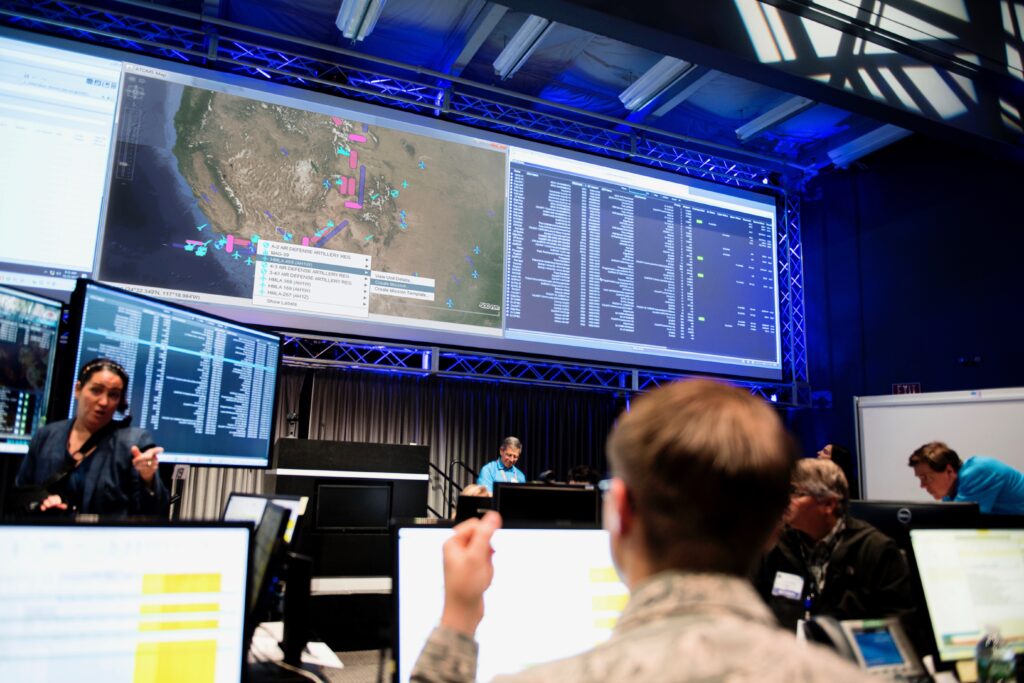 SUFFOLK, VA: Multi-domain command and control, one of the most important efforts the Pentagon is pursuing, is getting plumbed again by Lockheed Martin at its fourth wargame this week where the company will be testing four systems it believes can fuse data from sensors around the world and allow rapid communications to troops. “Integrated teams” of air, space, and cyber experts representing the transparently named country of “Pacifica” will be planning missions and creating kinetic and non-kinetic effects. That’s a major shift from the war game I attend a year ago, when separate groups of space, cyber and air tried to work together through a command and control unit.
SUFFOLK, VA: Multi-domain command and control, one of the most important efforts the Pentagon is pursuing, is getting plumbed again by Lockheed Martin at its fourth wargame this week where the company will be testing four systems it believes can fuse data from sensors around the world and allow rapid communications to troops. “Integrated teams” of air, space, and cyber experts representing the transparently named country of “Pacifica” will be planning missions and creating kinetic and non-kinetic effects. That’s a major shift from the war game I attend a year ago, when separate groups of space, cyber and air tried to work together through a command and control unit.The U.S. Needs a Cyber Force More Than a Space Force
By James Stavridis
Sadly, the proposal for a new U.S. Space Force is has become a punchline on late-night TV. It is being battered as a needless new bureaucracy, a competitor for the private sector, and an idea that will lead to a vicious militarization of space. None of these arguments is correct. Many of those denigrating the idea are under-informed and spring-loaded to dislike the idea because it is proposed by President Donald Trump. I have plenty of policy disagreements with the Trump administration, but on this issue it is boldly going in the right direction. And while the idea of a space force is smart, the new service component we really need is a Cyber Force. And it makes a lot of sense to bring both of these small, elite, high-tech branches to life right now.
How To Get An Open Source Developer Job In 2018
Louis Columbus
 The 2018 Open Source Jobs Report published by The Linux Foundation and Dice.com provides many useful insights into which skills are the most marketable, the technologies most affecting hiring decisions, and which incentives are most effective for retaining open source talent. Taken together the many insights in the study provide a useful roadmap for recently-graduated students and experienced open source, developers, and technical professionals. The study is based on a survey of over 750 hiring managers representing a cross-section of corporations, small & medium businesses (SMBs), government agencies and staffing firms worldwide in addition to 6,500 open source professionals. Additional details regarding the methodology can be found in the report downloadable here (PDF, 14 pp., opt-in). The following findings show how strong demand is for developers with open source expertise and which skills are in the most demand.
The 2018 Open Source Jobs Report published by The Linux Foundation and Dice.com provides many useful insights into which skills are the most marketable, the technologies most affecting hiring decisions, and which incentives are most effective for retaining open source talent. Taken together the many insights in the study provide a useful roadmap for recently-graduated students and experienced open source, developers, and technical professionals. The study is based on a survey of over 750 hiring managers representing a cross-section of corporations, small & medium businesses (SMBs), government agencies and staffing firms worldwide in addition to 6,500 open source professionals. Additional details regarding the methodology can be found in the report downloadable here (PDF, 14 pp., opt-in). The following findings show how strong demand is for developers with open source expertise and which skills are in the most demand.Don’t make this big machine learning mistake: research vs application
 These days, everyone’s getting in on Machine Learning (ML). It’s definitely a great direction to pursue for many businesses since it gives them the ability to deliver tremendous value in a fairly quick and easy way. The demand for machine learning skills is at an all time high. There’s a nice comprehensive report done by McKinsey about how AI is shaping industries and where the opportunities are.
These days, everyone’s getting in on Machine Learning (ML). It’s definitely a great direction to pursue for many businesses since it gives them the ability to deliver tremendous value in a fairly quick and easy way. The demand for machine learning skills is at an all time high. There’s a nice comprehensive report done by McKinsey about how AI is shaping industries and where the opportunities are.SHOULD BE OBVIOUS: WHY PRAYER IS IMPORTANT IN MILITARY LIFE
 After having the Declaration of Independence read to his troops, General George Washington issued the order, July 9, 1776: “Commanding officers of each regiment are directed to procure Chaplains … persons of good Characters and exemplary lives – To see that all inferior officers and soldiers pay them a suitable respect and attend carefully upon religious exercises. The blessing and protection of Heaven are at all times necessary but especially so in times of public distress and danger – The General hopes and trusts, that every officer and man, will endeavour so to live, and act, as becomes a Christian Soldier, defending the dearest Rights and Liberties of his country. … The peace and safety of his Country depends (under God) solely on the success of our arms.”
After having the Declaration of Independence read to his troops, General George Washington issued the order, July 9, 1776: “Commanding officers of each regiment are directed to procure Chaplains … persons of good Characters and exemplary lives – To see that all inferior officers and soldiers pay them a suitable respect and attend carefully upon religious exercises. The blessing and protection of Heaven are at all times necessary but especially so in times of public distress and danger – The General hopes and trusts, that every officer and man, will endeavour so to live, and act, as becomes a Christian Soldier, defending the dearest Rights and Liberties of his country. … The peace and safety of his Country depends (under God) solely on the success of our arms.”To win future conflicts, combatant commands must be integrated
By: Mark Pomerleau
/arc-anglerfish-arc2-prod-mco.s3.amazonaws.com/public/XLWFNOZAFRAZLHQBUDXAZPOUFA.jpg) The head of Strategic Command has outlined a vision for the future to better integrate war-fighting functions and capabilities to keep pace with adversaries in an increasingly dynamic environment. Responsible for a diverse set of missions, STRATCOM has been structured in stovepipes: the nuclear triad (itself three stovepipes), space, conventional global strike and missile defense. Yet Gen. John Hyten, speaking Aug. 13 at the annual DoDIIS conference in Omaha, Nebraska (STRATCOM’s home), envisions a future in which the command is one innovative war-fighting team that deters conflict and delivers decisive capabilities from, in and through all domains, wherever and whenever needed.
The head of Strategic Command has outlined a vision for the future to better integrate war-fighting functions and capabilities to keep pace with adversaries in an increasingly dynamic environment. Responsible for a diverse set of missions, STRATCOM has been structured in stovepipes: the nuclear triad (itself three stovepipes), space, conventional global strike and missile defense. Yet Gen. John Hyten, speaking Aug. 13 at the annual DoDIIS conference in Omaha, Nebraska (STRATCOM’s home), envisions a future in which the command is one innovative war-fighting team that deters conflict and delivers decisive capabilities from, in and through all domains, wherever and whenever needed.U.S. Special Operations Command’s Future
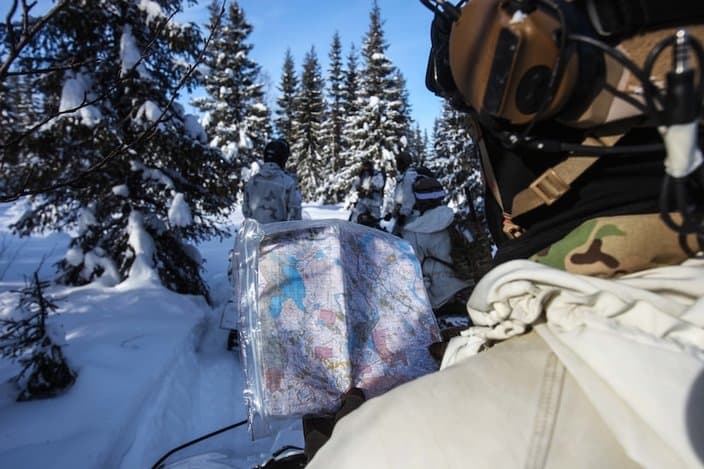 As U.S. Special Operations Command (USSOCOM) celebrates its 30thanniversary, it faces a future characterized by increasingly complex, dynamic, and ill-defined security challenges. And since the terrorist attacks of September 11, 2001, USSOCOM has been at war for half of its existence. During this period, USSOCOM has rapidly evolved into a global enterprise with broad joint warfighting, interagency, and international partnering responsibilities.1 To better address the highly complex challenges of modern conflicts, USSOCOM developed the USSOCOM Design Way (SDW), an approach to problem-solving that encourages creativity, critical thinking, and innovation.
As U.S. Special Operations Command (USSOCOM) celebrates its 30thanniversary, it faces a future characterized by increasingly complex, dynamic, and ill-defined security challenges. And since the terrorist attacks of September 11, 2001, USSOCOM has been at war for half of its existence. During this period, USSOCOM has rapidly evolved into a global enterprise with broad joint warfighting, interagency, and international partnering responsibilities.1 To better address the highly complex challenges of modern conflicts, USSOCOM developed the USSOCOM Design Way (SDW), an approach to problem-solving that encourages creativity, critical thinking, and innovation.Approaching a “New Normal”: What the Drone Attack in Venezuela Portends
Colin P. Clarke
When two drones, each equipped with a kilogram of powerful plastic explosives, were used on August 4 to attempt to assassinate Venezuelan President Nicolas Maduro, it may have ushered in a foreboding new era—terrorism by unmanned aircraft. The use of weaponized drones by lone individuals and small groups—some acting as proxies of nation-states—is no longer just a concern for the future, but very much for the present. The proliferation of certain emerging technologies has effectively diffused power and made it available at the lowest levels. The barriers to entry have never been lower for individuals to gain access to commercial off-the-shelf technology that can be used to lethally target individuals. Lone actors or small cells of terrorists, criminals, or insurgents can effectively harness the tactical flexibility of a small drone to wreak havoc, including potentially using a drone to take down an airliner.
U.S. MILITARY GIVEN SIX MONTHS TO CHECK IF TROOPS SPEAK RUSSIAN, CHINESE, KOREAN, FARSI AND ARABIC
BY TOM O'CONNOR
The U.S. military has been ordered to evaluate the critical language skills of its personnel within the next six months, according to the National Defense Authorization Act signed Monday by President Donald Trump. The 2019 NDAA has made specific reference to the languages spoken by top U.S. foes, including Russia, China, North Korea, Iran and the various nations and groups across the Arab World. In one section, the act calls directly on Defense Secretary James Mattis to review the U.S. military's foreign language capabilities by February and report back to Congress with the results.
CUTTING THEIR TEETH OR TYING THEIR HANDS?: NORTHWEST FRONTIER TACTICS AND WORLD WAR, 1897 – 1945
Gil Barndollar
Perhaps no army in history has ever juggled as wide and challenging an array of campaigns and conditions as the British Army did from 1897 to 1945. Battling enemies from Burma to Belgium, the British Army rapidly transformed itself from a small imperial constabulary to a war-winning conscript mass army, shrank back almost overnight, and then repeated the trick barely twenty years later. Through it all, from the height of empire to the Pyrrhic victory of the Second World War, one of the army’s few constants was ceaseless mountain warfare on the Northwest Frontier of India. The Northwest Frontier, now the Federally Administered Tribal Areas of Pakistan, is a mountainous region that sits above the fertile plain of the Indus valley. Today the FATA is known as a sanctuary for the Taliban, a lawless region rife with insurgents, arms manufacturers, and drone strikes. But the Frontier, and especially its heartland of Waziristan, has always been a source of trouble for its neighbors. Living in poor, rocky land with little opportunity for more than subsistence farming, the Pathan (or Pashtun) tribesmen of the Frontier raided and stole from the rich Indian lands to the south for millennia. The Frontier also provided a route for more serious invaders. Indeed, in the entire recorded history of India the British had been the lone conquerors not to come from the northwest.
